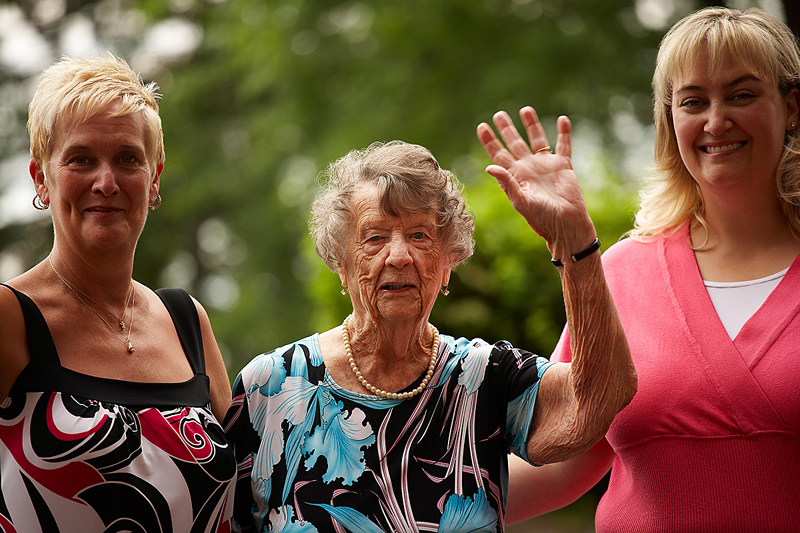
FRIDAY, Jan. 28 (HealthDay News) — People facing a fatal illness often find their fears and pain exacerbated by lack of control — with doctors poking and prodding and treating and testing even as the end grows near.
Hospice care, however, can give back some control over someone’s final days through its compassionate focus on treating pain and helping both the dying person and the person’s family emotionally grapple with what’s to come.
Little wonder, then, that hospice has become an increasingly popular option for people with a fatal illness.
“I don’t know about you, but when I’m sick and not feeling good, I’d much rather be at home,” said J. Donald Schumacher, president and chief executive of the National Hospice and Palliative Care Organization, a nonprofit group of hospice and palliative care programs and professionals in the United States. “I think dying is the same way. If you’re going to die, it’s better to be in your own environment and away from the high-technology setting of the hospital.”
Hospice care also has become more popular because it is almost always a more cost-effective way of caring for someone who’s terminally ill.
“What happens is, because the disease process is so acute, the patient makes a lot of trips to the emergency room and a lot of trips to the hospital,” said Kathleen Pacurar, president and chief executive of San Diego Hospice and the Institute for Palliative Medicine. “With hospice, because we are managing their symptoms and pain and we’re available 24/7, patients call us rather than the medics when they are in pain or distress. That means fewer trips to the hospital and a lot fewer medical procedures.”
Nearly two of every five people who died in the United States in 2008 were under the care of a hospice program at the time of their death, according to the national hospice group.
“It actually increases pretty steadily every year,” Schumacher said. “This year, 1.5 million people will have received hospice care. The increase is continuing as the knowledge of hospice is increasing in the health-care industry.”
Hospice care, often recommended for people who have fewer than six months to live, focuses on making people comfortable rather than curing their disease. Usually, care is provided in the person’s home, although a person also can receive care in hospice centers, nursing homes and, increasingly, hospitals, according to the hospice organization. Hospice care is covered under Medicare, Medicaid and most health insurance plans.
A person’s hospice team develops a care plan that helps control pain and symptoms. The team also will:
- Help the patient and family members deal with the emotional and spiritual aspects of dying.
- Equip the patient’s home with needed medical supplies and equipment.
- Coach family members on caring for the person.
- Provide quick-response care on an around-the-clock basis when pain or symptoms flare up.
- Make bereavement care available to the patient’s surviving family and friends.
Hospice has had to overcome many myths and ill-conceived notions on its way to gaining wider acceptance from the public.
But one notion that patients and their families still struggle with is the idea that choosing hospice means the person is “giving up.” People who go into hospice are free to leave at any time, if their symptoms improve or they decide to pursue a new curative treatment, Pacurar said.
“It’s not about giving up,” she said. “It’s about regaining control of your life at this time when chaos is reigning.”
In fact, people who agree to hospice care often end up with extended life spans. One recent study cited by the National Hospice and Palliative Care Organization found that people who chose hospice care lived an average of one month longer than similar people who did not opt for hospice.
“Sometimes patients live longer because their pain is managed and their symptoms are palliated,” Pacurar said.
Another myth is that hospice care hastens death through the use of medications. “That’s about as far from the truth as it can possibly be,” Pacurar said. The focus really is on using knowledge of painkillers and symptom treatments to create a better quality of life for terminally ill people, she said.
In many cases, she explained, people are being over-medicated, and hospice workers can effectively treat their pain while restoring some lucidity to them. “We’ve had families come up to us and say, ‘Dad was so far out of it until you came in,'” Pacurar said.
One mistake made by many is to delay end-of-life discussions because the subject is painful, Schumacher said.
Even doctors apparently fall prey to this instinct. A survey of cancer physicians found that 65 percent said they would discuss with a patient the fact that the person had four to six months to live even though they were still feeling well, but only one in four doctors would discuss hospice with that patient.
“Don’t wait too long,” Schumacher said. “Don’t wait too late until you get your loved one the care they need.”
More information
The U.S. National Institute on Aging has more about finding care at the end of life.
A companion article explains how a California woman refutes a hospice myth.

